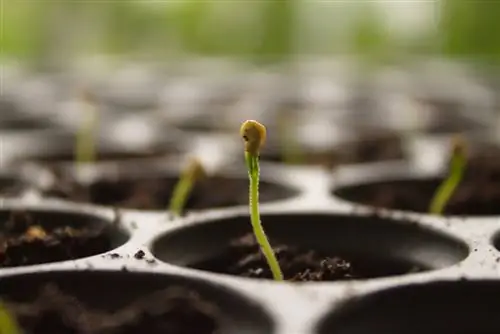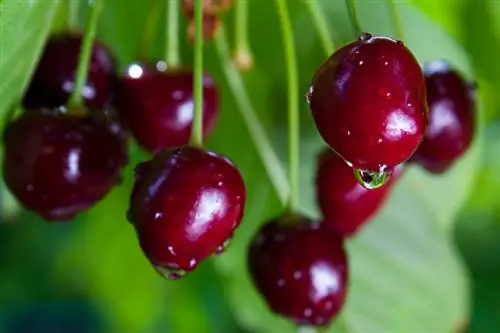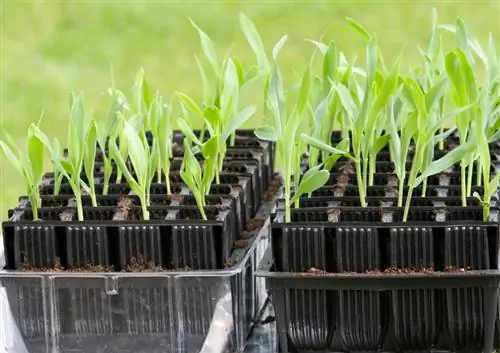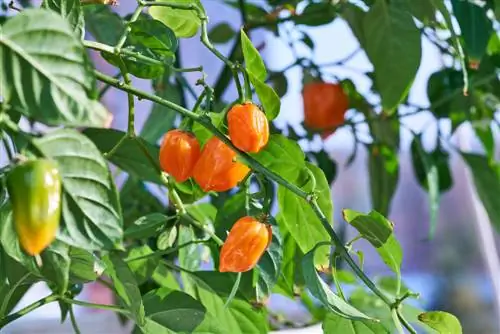- Author admin [email protected].
- Public 2023-12-25 17:45.
- Last modified 2025-01-23 11:22.
The Habanero is a variety of chili that migrated from Mexico. Accordingly, she has special demands on her living conditions. Planting is an important step in their cultivation. It must not happen arbitrarily, otherwise all the effort will be in vain.
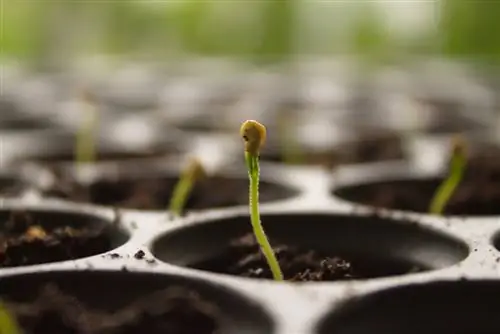
How to plant habanero chilies correctly?
To plant habanero chilies, sow the seeds 0.5 to 1 cm deep in potting soil in February or March. Separate after the third pair of leaves and move to sunny bed or pot areas from mid-May, after the ice saints. Fertilize and water sufficiently, and harvest after 70-100 days.
Sowing
Small plants are rarely offered in stores. Even if you want to exploit the entire variety of varieties, you have to start cultivating the Habanero with sowing.
- sow indoors 0.5 to 1 cm deep
- in February or March
- Use potting soil
- keep moderately moist at all times
- Keep the cultivation pot light and warm at least 24 °C
- single from the third pair of leaves
Tip
You can take seeds from a ripe pod or order them online (€2.00 on Amazon). Some varieties are also available in local garden centers.
Time for the outdoors
Habanero plants are sensitive to cold. They are only allowed to go outside after the Ice Saints, when they are no longer threatened with frost. However, you can go outside for a few hours beforehand to harden off a few weeks beforehand, provided the temperature is above 10 °C.
Bed or pot
Habanero can be cultivated both as a pot plant and in a bed. In both cases it needs to be sunny and warm. The pot must be large and have drainage holes. Only one plant is planted per pot. In the bed, the planting distance between two plants is approx. 40 cm.
Fertilize
The potted plant draws its first nutrients from the potting soil, which is sold already enriched. The garden soil is supplied with compost before planting. These starting requirements will provide the plant with enough energy for a few weeks. You can then fertilize regularly with a fertilizer for nightshade plants.
Pouring
The smaller a habanero plant is, the more often it needs to be watered. But even adult plants still need to be supplied as needed. Especially when cultivating in a pot and on particularly hot days, make sure that the soil around the root ball does not dry out.
Harvesting
You can harvest the first podsabout 70 to 100 days after sowing. They change color at this time. The individual chilies ripen one after the other. The ongoing harvest stimulates the formation of new fruits. Fruits that you cannot process early can be dried for later.
Wintering
Because of its sensitivity to frost, the Habanero is usually only cultivated as an annual. But you can also overwinter potted specimens in winter quarters.

